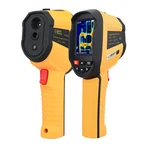Why do pH electrodes need to be immersed
The pH electrode must be soaked before use because the pH bulb is a special glass film with a very thin hydrated gel layer on the surface of the glass film, which responds well to H ions in solution only under sufficiently wet conditions. At the same time, the glass electrode can be immersed so that the asymmetric potential is greatly reduced and stabilised.
pH glass electrodes can generally be soaked in distilled water or pH4 buffer solution. It is usually better to use pH4 buffer solution, and the soaking time is from 8 hours to 24 hours or longer, depending on the thickness of the bulb glass film and the degree of aging of the electrode.
Also, the liquid junction of the reference electrode needs to be soaked. Because if the liquid junction dries up, it will make the potential of the liquid junction increase or become unstable. The soaking solution of the reference electrode must be the same as the external reference solution of the reference electrode, i.e., 3.3mol/L KCL solution or saturated KCL solution, and the soaking time is generally a few hours.
Correct immersion of pH composite electrode
Soak in a pH4 buffer solution containing KCL so that it acts on both the glass bulb and the liquid junction. Special attention should be paid here, because in the past, people have been used to soak the single pH glass electrode with deionised water or pH4 buffer solution, and later on, when using the pH composite electrode, they still adopt such a soaking method, and even in the instruction manuals of some incorrect pH composite electrodes, such incorrect instructions are also carried out.
The direct consequence of this wrong soaking method is to make a good performance of the pH composite electrode into a slow response, poor accuracy of the electrode, and the longer the soaking time, the worse the performance, because after a long time of soaking, the liquid junction of the internal (such as the sand core inside the) KCL concentration has been greatly reduced, so that the liquid junction potential increases and instability. Of course, the electrode will still recover if it is re-soaked in the correct soaking solution for a few hours.
Also, pH electrodes should not be immersed in neutral or alkaline buffer solutions; prolonged immersion in such solutions will dull the response of the pH glass membrane. The preparation of the correct pH electrode soaking solution: take a packet of pH4.00 buffer (250ml), dissolve it in 250ml of pure water, then add 56g of analytically pure KCl, heat it appropriately and stir it until it is completely dissolved.






